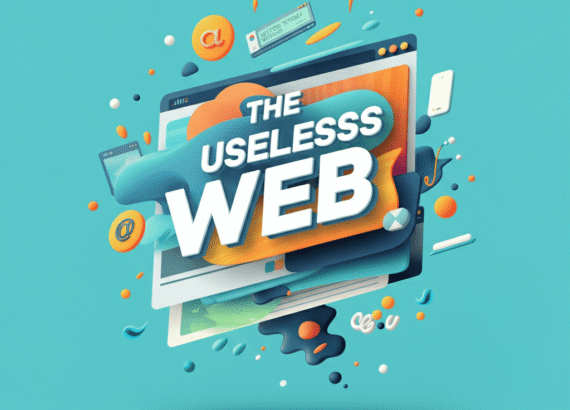In today’s digital world having a website is crucial for businesses as it serves as a 24/7 online store to make their products available and accessible to their consumers. With the increased use of the internet and technology web development has gained a top position in the digital era. A website with a perfect and dynamic user interface helps individuals and businesses to establish a prominent online presence making it easy for them to serve the worldwide audience.
For e-commerce businesses particularly, the stakes are incredibly high. Profits and losses of an e- commerce business can vary depending on various factors but one most understood factor is the optimized and performance-tuned website. We, Nextr Technology – web development services company specialize in providing comprehensive web development solutions and effective E-Commerce website design. In this blog, we will explore common web development mistakes and provide you with strategic recommendations on how to avoid them, ensuring your website stands out in a crowded market.
1. Neglecting Mobile Responsiveness
Neglecting mobile responsiveness is a sure way to exclude a large portion of your audience. With more than 50% web traffic a low-optimized website can frustrate the consumers. Despite this, many websites are still designed majorly for desktops, without having a thought about mobile users leaving them with a poor browsing experience.
How to Avoid:
To ensure the performance of your website across all devices, take a mobile-oriented approach during the design and development process. This means designing for smaller screens first and scaling up for larger devices like desktops. You can use responsive design frameworks such as Bootstrap or Tailwind CSS to automatically adjust the layout and content based on screen size.

After this, test your website on multiple devices and screen resolutions to ensure consistent performance. There are many testing tools present on the internet named as Mobile-Friendly Test which can quickly help you identify any with mobile usability.
2. Slow Website Speed
In this world where consumers want everything intantly, a slow-loading website can test their patience level leading to a hazard to your business. Many researches show that more than 50% of users abandoned those sites that took longer to load or respond. This has not only been proven a nasty experience for the users but also has affected the search engine rankings of the website itself, as Google considers site speed a major factor in SEO rankings.
How to Avoid:
To improve your website’s speed start with optimizing your resources by compressing images to reduce their size without compromising their quality, and minimize HTTP requests by combining files like CSS and Javascript. Browser caching should be enabled so that the returning users can load the pages faster. There are various tools available on the internet such as Google PageSpeed Insights and GTMetrix can help you to identify the areas for improvement.
Another important factor is your hosting provider. If the site is hosted on a slow server, even after optimization it will not improve your load times. There are many hosting providers available that are known for their speed such as Cloudways, A2 Hosting, DreamHost, InMotion Hosting, SiteGround, GoDaddy, and many more. Another solution to your slow website speed is reducing redirects.
Whenever a page redirects to another page, your visitor faces a waiting time which corresponds to the HTTP request-response cycle to complete.

3. Poor Navigation and User Experience (UX)
Even if your website is perfect in looks your users may not be satisfied due to poor navigation. A confusing and unorganized navigation menu, lack of a search function, or complicated and chaotic layouts can frustrate your users leading to a decrease in their numbers. Particularly for e-commerce sites, this can result in a loss of sales as users may struggle to find what they want.
How to Avoid:
For a good navigation it should have a clear and simple architecture and for that you may look upon the following:
- Limited number of menu options
- Using proper icons, images and buttons
- Use a matching type of navigation menu according to the structure of your website(top menu, footer menu, Sidebar and breadcrumbs)
Organize you content logically with well-defined categories and subsections.

4. Ignoring SEO Best Practices
SEO- Search Engine Optimization is one of the most important practices in web development and ignoring it is included as one of the most critical mistakes made by developers. Failing to implement best SEO practices a website may face issues in getting noticed in the web traffic. It is very crucial to drive consumer traffic to your website, and failing which even the most beautifully designed website may go unnoticed. Common SEO issues include duplicate content, mobile optimization, site speed, keyword stuffing, HTTPS, unstructured data, indexing issues, redirects, etc.
How to avoid:
- Maintain a clean and well-structured website code.
- Use proper heading tags like H1, H2, H3, H4, H5, H6 & H7 to organize your content and make it easier for search engines to understand on the Google SERP.
- Make sure your URLs are also SEO-friendly.
- Make sure every image has an alt attribute that describes its content. Ensure faster loading of your website as it is the major ranking factor for google.

5. Lack of security features
Lack of security features are a common security threats in web development. Lagging of Authentication and identification can lead to unauthorized access and can pose a threat to web security. A malicious user may pass on malware to your website through different ways. There are different types of web security risks including – Credential Stuffing, Brute Force Attacks, SQL Injection, Cross-Site Scripting, Cookie Poisoning, man-in-the-middle (MITM) attacks, Sensitive Data Disclosure, and much more.
How to avoid:
Take security into account from day one. Here is the list of solutions you may approach:
- Implement strong authentication by using strong passwords.
- Secure coding Practices for web application security.
- Keep your software updated.
- Penetration testing is done to find vulnerabilities in a computer system.
- Implement Input data validation
- Use encryption for confidential information
Regularly update your Content Management System, plugins, and any third-party integrations.

Conclusion
By avoiding these common web development mistakes and adopting all mentioned best practices quality and performance of your websites and applications can be enhanced. Staying up-to-date with the latest technology and trends would favor your web development skills. Keep a security-oriented mindset along with user experience and adhering to coding standards and web development solutions. Last but not least ensure SEO optimization practices specific to the web development which would lead you to better ranking on the search engine.
Get up to 70% Discount on Amazon (Buy Now)
Buy Web Hosting at an affordable price: Buy Now
If you want to build your website at an affordable price, contact www.nextr.in
Read this: How To Become A Web Developer?


















